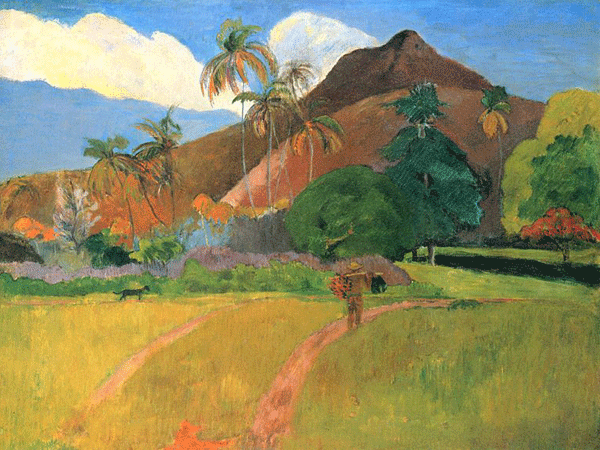 I’ve been thinking a lot about the South Pacific this week. Perhaps it’s the frost on the windshield of the car this morning forcing me to deal with Father Winter or flee to the tropics. Similar to Africa, the South Pacific is one of those places that get under your skin, coaxing you to return as often as possible. Unlike the majority of the Caribbean isles, which can only boast a white strip of sand, the South Pacific isles are jaw-dropping jagged peaks that rise straight up from the ocean, carpeted in emerald green overripe foliage. For me, this is paradise.
I’ve been thinking a lot about the South Pacific this week. Perhaps it’s the frost on the windshield of the car this morning forcing me to deal with Father Winter or flee to the tropics. Similar to Africa, the South Pacific is one of those places that get under your skin, coaxing you to return as often as possible. Unlike the majority of the Caribbean isles, which can only boast a white strip of sand, the South Pacific isles are jaw-dropping jagged peaks that rise straight up from the ocean, carpeted in emerald green overripe foliage. For me, this is paradise.
After my inaugural trip to the region in 1990, I would make the South Pacific my area of expertise, returning as often as possible. This is especially true of the French Polynesia isles, a mere two hour flight past Hawaii. Perhaps, I was fed too much Fletcher Christian as a boy and wanted to follow in the footsteps of Captain Bligh. Or maybe it was the languorous women Gauguin painted after entertaining them in his supposed House of Debauchery.
All I know is that when I first arrived on the island of Tahiti and its bustling city of Papeete, I would have been happy to be back in Boston scraping the ice off my sidewalk. There were traffic jams, pollution-spewing cars, far too many uptight Frenchmen, and tuna sandwiches at $20 a pop. If Fletcher Christian saw present-day Tahiti, he might have continued his voyage with Bligh. Their major site, The Gauguin Museum, had no original works by the artist (another ironic twist is that Gauguin’s masterpiece, Where Do We Come From? What Are We? Where Are We Going? (1897-98), is right down the road from me in Boston). Across the way, the Harrison Smith Botanical Gardens, a collection of tropical plants from around the world founded by a former MIT physics professor, was not in the least bit memorable. I wanted to get lost in the lushness of nature, not take a walk through some manicured garden.
Then my wife and I made the wise move to head to Raitea. For me, authenticity in travel often goes hand-in-hand with a solid connection to the people of that community. Within 15 minutes of paddling on a winding river that snaked through the island, we came upon a group of kids diving off a tree swing into the water. They were so excited to see us that they insisted on showing us the small thatched huts they lived in, sat us down on a mat, and served us fresh papaya from the fields behind them.
On another trip, a 16-day cruise aboard the freighter ship
Aranui brought us the Marquesas. 750 miles north of Tahiti, the Marquesas are the most remote islands in the world, farthest from any continent. Immense green mountains pierce the clouds overhead on many of the twelve islands, retaining the savage beauty that inspired Gauguin to live and be buried on Hiva Oa. A young 22-year-old sailor named Herman Melville was so enraptured with the island of Nuka Hiva that he chose to jump ship and live with cannibals rather than continue his voyage. You can read about it in his first book, Typee. One of the most stunning natural sites I’ve ever seen was the Bay of Virgins on the island of Fatu Hiva. Towering, storm-worn basalt rises from the ocean’s depth forming a v-shaped buttress that’s illuminated by the sun. In the distance, serrated ridges and impassable gorges stand as a monument to the centuries of volcanic fires that formed this fantastic landscape.
When I returned from my trip to the Marquesas, I met a couple who spent their entire honeymoon solely on the island of Tahiti. It made me want to cry. It reminds me of a backpacking trip I took to Newfoundland, where we went off the trail less than 100 yards to look straight down at a magnificent fjord. Our guide knew it was there, but unfortunately none of the other hikers did and kept on walking. My hope for creating our travel agency,
ActiveTravels.com, is to steer travelers in the right direction so they don’t spend their entire time in French Polynesia on the island of Tahiti.
 Even as New England ski areas make it more and more enticing to venture their way, adding an array of exciting activities like tubing and ziplining, many of us want to avoid the crowds. We savor the opportunity to get lost in the wilderness, breathing in the scent of pines in relative quietude. Add a sport that will wipe away the worries of the world and you’ll quickly remember why we treasure New England. This week, I’m going to discuss 5 ways to get lost in the New England wilderness this winter.
Even as New England ski areas make it more and more enticing to venture their way, adding an array of exciting activities like tubing and ziplining, many of us want to avoid the crowds. We savor the opportunity to get lost in the wilderness, breathing in the scent of pines in relative quietude. Add a sport that will wipe away the worries of the world and you’ll quickly remember why we treasure New England. This week, I’m going to discuss 5 ways to get lost in the New England wilderness this winter. 
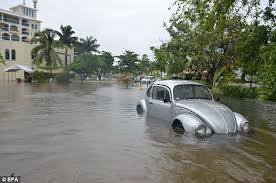 n 1974, a team of Mexican government computer analysts picked a long sliver of land on the Atlantic shoreline as the country’s next Acapulco. The powdery white sands and turquoise waters, separated from the mainland by a lagoon were ripe for development. Sheraton, Hilton, and Marriott swiftly built their hotels, soon joined by upscale Ritz-Carlton and the flashy Le Meridien, and Americans took the bait wholeheartedly. Today, Cancun is the number one tourist destination in Mexico. Sadly, however, the Mexicans catered far too much to their northern neighbors. With a Hard Rock Café, Planet Hollywood, Rainforest Café, Outback Steak House, and a McDonald’s or shopping mall on every other block, the 14-mile-long Zona Hotelera (Hotel Zone) looks much more like Miami Beach than any Mexican village. In fact, the Cancun version of the Miami Herald arrives at your hotel doorstep each morning. Roads are often flooded and prices for dinner are exorbitant in a country known for its affordability.
n 1974, a team of Mexican government computer analysts picked a long sliver of land on the Atlantic shoreline as the country’s next Acapulco. The powdery white sands and turquoise waters, separated from the mainland by a lagoon were ripe for development. Sheraton, Hilton, and Marriott swiftly built their hotels, soon joined by upscale Ritz-Carlton and the flashy Le Meridien, and Americans took the bait wholeheartedly. Today, Cancun is the number one tourist destination in Mexico. Sadly, however, the Mexicans catered far too much to their northern neighbors. With a Hard Rock Café, Planet Hollywood, Rainforest Café, Outback Steak House, and a McDonald’s or shopping mall on every other block, the 14-mile-long Zona Hotelera (Hotel Zone) looks much more like Miami Beach than any Mexican village. In fact, the Cancun version of the Miami Herald arrives at your hotel doorstep each morning. Roads are often flooded and prices for dinner are exorbitant in a country known for its affordability.  I’ve been thinking a lot about the South Pacific this week. Perhaps it’s the frost on the windshield of the car this morning forcing me to deal with Father Winter or flee to the tropics. Similar to Africa, the South Pacific is one of those places that get under your skin, coaxing you to return as often as possible. Unlike the majority of the Caribbean isles, which can only boast a white strip of sand, the South Pacific isles are jaw-dropping jagged peaks that rise straight up from the ocean, carpeted in emerald green overripe foliage. For me, this is paradise.
I’ve been thinking a lot about the South Pacific this week. Perhaps it’s the frost on the windshield of the car this morning forcing me to deal with Father Winter or flee to the tropics. Similar to Africa, the South Pacific is one of those places that get under your skin, coaxing you to return as often as possible. Unlike the majority of the Caribbean isles, which can only boast a white strip of sand, the South Pacific isles are jaw-dropping jagged peaks that rise straight up from the ocean, carpeted in emerald green overripe foliage. For me, this is paradise. 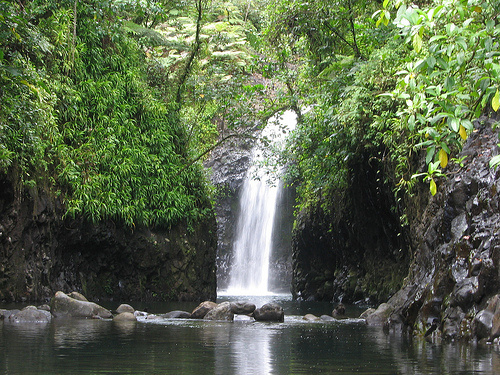 In 1990, I left my job as an insurance broker in Manhattan and booked a four-month trip to the South Pacific, New Zealand, and Australia. The day before I left on that fateful journey, I was strolling through the Fifth Avenue Book Fair when I found a book titled “Travel Writing, For Profit and Pleasure” by Perry Garfinkel. I did exactly what the author advised, kept a journal when I was away, and when I returned home I sold my first story, “Learning to Scuba Dive in the Cook Islands” to The Miami Herald. It was the start of a prolific travel writing career, where I would write more than 1500 articles and close to a dozen books. Another one of the stories sold from that inaugural journey was
In 1990, I left my job as an insurance broker in Manhattan and booked a four-month trip to the South Pacific, New Zealand, and Australia. The day before I left on that fateful journey, I was strolling through the Fifth Avenue Book Fair when I found a book titled “Travel Writing, For Profit and Pleasure” by Perry Garfinkel. I did exactly what the author advised, kept a journal when I was away, and when I returned home I sold my first story, “Learning to Scuba Dive in the Cook Islands” to The Miami Herald. It was the start of a prolific travel writing career, where I would write more than 1500 articles and close to a dozen books. Another one of the stories sold from that inaugural journey was  “Goreme? You stop in Goreme?” I asked the bus driver as I pointed to our ticket.
“Goreme? You stop in Goreme?” I asked the bus driver as I pointed to our ticket. 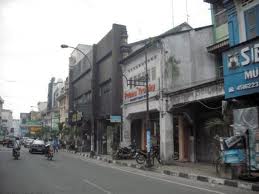 Pressured by travel editors to write flowery prose about a destination so that publications can secure those necessary advertising dollars, most travel writing is a bore. Even worse are travel writers who pen stories in return for a free press trip. Their writing is often indistinguishable from a publicist’s press release. Take it from a travel expert. Rarely have I ever encountered a perfect trip, where the travel, accommodations, and destinations are all stellar during the same jaunt. There is always some adventure you’re thrust into willingly or not, some bizarre local you meet that helps define the place, and a slew of mishaps. Place those anecdotes into the article and you have a great read, not unlike the writings of Bruce Chatwin or Paul Theroux.
Pressured by travel editors to write flowery prose about a destination so that publications can secure those necessary advertising dollars, most travel writing is a bore. Even worse are travel writers who pen stories in return for a free press trip. Their writing is often indistinguishable from a publicist’s press release. Take it from a travel expert. Rarely have I ever encountered a perfect trip, where the travel, accommodations, and destinations are all stellar during the same jaunt. There is always some adventure you’re thrust into willingly or not, some bizarre local you meet that helps define the place, and a slew of mishaps. Place those anecdotes into the article and you have a great read, not unlike the writings of Bruce Chatwin or Paul Theroux. 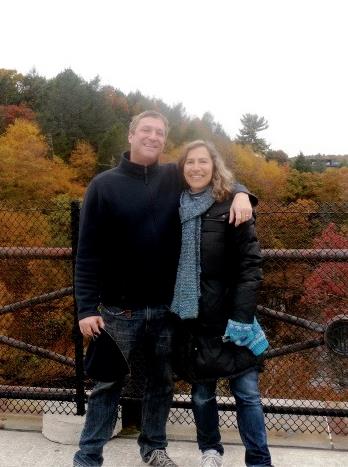 The increasingly popular getaway of Belize, our favorite outfitters for family safaris in Africa, a river cruise on the Danube with Uniworld, and a romantic retreat at Rabbit Hill Inn in Vermont are some of the topics we discuss in our latest issue.
The increasingly popular getaway of Belize, our favorite outfitters for family safaris in Africa, a river cruise on the Danube with Uniworld, and a romantic retreat at Rabbit Hill Inn in Vermont are some of the topics we discuss in our latest issue.  To commemorate the 150th anniversary of the publication of Henry David Thoreau’s “The Maine Woods,” the
To commemorate the 150th anniversary of the publication of Henry David Thoreau’s “The Maine Woods,” the 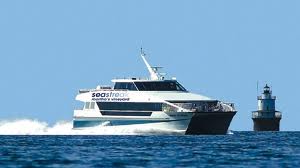 I just received word that
I just received word that 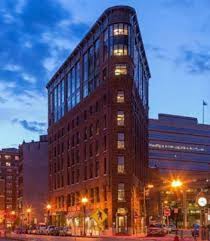 Several ski writers who came into Boston last week for the Boston Ski Show mentioned that they loved their hotel,
Several ski writers who came into Boston last week for the Boston Ski Show mentioned that they loved their hotel,